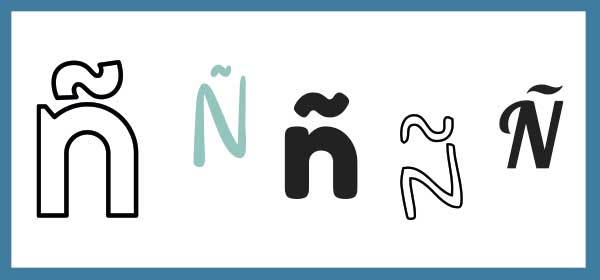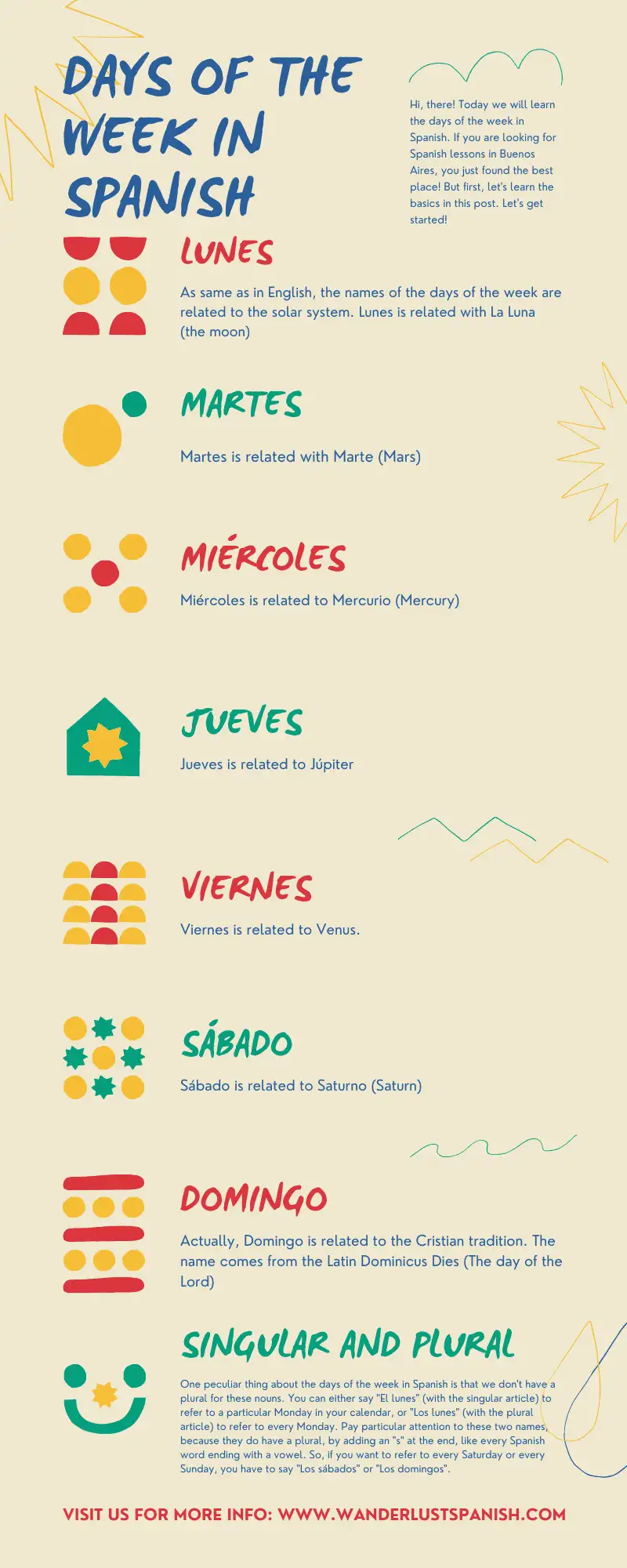Step into the captivating world of the Spanish language, where every letter weaves a mesmerizing tale. In this enchanting blog, Wanderlust Spanish School invites you to embark on a journey to unravel the mysterious allure of the letter “Ñ.” A symbol of Spanish identity and an integral part of its linguistic heritage, the “Ñ” beckons us with its unique charm and adds a touch of magic to the Spanish language. Join us on this linguistic adventure as we explore the history, evolution, and cultural significance of this distinct letter, and unlock the secrets that make it an indispensable thread in the tapestry of Spanish expression. Get ready to be captivated by the spellbinding lore of the letter “Ñ,” as we uncover its essence and celebrate the fascinating role it plays in the realm of Spanish communication. Let the voyage begin!
A Brief History of the Letter “Ñ”
Contents
The letter “Ñ,” often regarded as one of the most distinctive and enchanting characters in the Spanish alphabet, has a captivating history that traces back to the Middle Ages. Its origins are rooted in the challenges faced by medieval scribes and scholars who sought to accurately represent the unique sounds present in the evolving Spanish language.
During this time, the Latin-based script used in Spain encountered a linguistic dilemma. The Spanish language underwent a gradual transformation, incorporating influences from various cultures, including Arabic, Romance, and Visigothic, resulting in a diverse range of phonetic sounds that required precise representation in writing.
One particular sound that posed a challenge was the nasal palatal sound represented by the combination of “n” and “y” (similar to the “ny” sound in “canyon”). This distinctive phoneme was prevalent in the Old Spanish language but lacked a dedicated symbol. As a result, scribes and scholars employed various strategies, such as superimposing the letters “n” and “y” or using an accent mark, to signify the sound.
However, these makeshift solutions were not entirely satisfactory, and the need for a more distinct symbol became evident. The breakthrough came with the advent of medieval scriptoria and the gradual standardization of writing practices. Scribes and copyists, recognizing the necessity for clarity and uniformity, began to employ a ligature—a combination of letters—in their manuscripts to represent the elusive nasal palatal sound.
The letter “Ñ” emerged as a product of this artistic and linguistic evolution. It was a marriage of the letters “n” and “y,” crafted into a single character with a unique form. The term “tilde” later became associated with the diacritical mark (the squiggly line over the letter “Ñ”), which further distinguished it from the standard “N” sound.
The significance of the letter “Ñ” extends beyond its linguistic function. It became a symbol of cultural identity and an emblem of Spanish heritage. As Spain expanded its influence across the globe during the Age of Exploration, the letter “Ñ” found its way into the Spanish-derived languages of the Americas, enriching the linguistic diversity of these regions.
Today, the letter “Ñ” remains a cherished and vital component of the Spanish alphabet, serving as a tribute to the intricate evolution of language and the enduring legacy of Spanish culture. From its humble beginnings as a creative solution to a phonetic challenge, “Ñ” has transcended time and space to become a symbol of linguistic richness and cultural pride in the Spanish-speaking world. Its allure lies not only in its phonetic significance but also in the stories of countless scribes and scholars who contributed to its creation, leaving behind an enchanting tale of the letter “Ñ” in the annals of language history.
Spanish Alphabet: The Pronunciation of “Ñ”
In the captivating world of Spanish phonetics, the letter “Ñ” reigns as a symbol of linguistic charm and melodic grace. Its pronunciation, the palatal nasal sound /ɲ/, exudes an enchanting quality reminiscent of a harmonious breeze rustling through ancient languages. To grasp the essence of this unique phoneme, one must embark on a journey into the realm of linguistic intricacies.
Picture the velvety “ny” in the English word “canyon” or the mellifluous “gn” in the Italian word “gnocchi.” The palatal nasal sound, represented by the letter “Ñ” in Spanish, echoes this ethereal blend of consonantal elegance and nasal resonance. It arises from the interaction of the tongue’s middle part against the hard palate, resulting in a distinctive nasal twang that adds allure to the spoken language.
For aspiring Spanish speakers, mastering the pronunciation of “Ñ” is an essential rite of passage. The letter’s presence is ubiquitous in everyday vocabulary, woven into the fabric of numerous common words that span the vast tapestry of Spanish discourse. From the endearing term “niño” (child) that evokes innocence and warmth, to the hopeful anticipation of “mañana” (tomorrow) that heralds the promise of a new day, and the reflections of “año” (year) that mark the passage of time—each word intertwines with “Ñ” to create a melodic symphony of expression.
The process of mastering the palatal nasal sound requires a delicate dance of articulation and breath. Place the tongue firmly against the hard palate, right behind the alveolar ridge, and allow the air to pass through the nasal cavity while creating a gentle friction. The result is a delightful amalgamation of nasal resonance and velar elegance—a sonic wonder that embodies the soul of Spanish phonetics.
As learners of this melodious language, aspiring to channel the spirit of Argentine poets and embrace the essence of Spanish culture, the mastery of “Ñ” holds the key to unlocking a world of nuanced expression. Embrace the opportunity to immerse yourself in the enchanting phonetics of Spanish, and let the palatal nasal sound of “Ñ” carry your words to new heights of linguistic elegance.
So, as you traverse the linguistic landscape of Spanish, don’t shy away from the delightful “Ñ.” Embrace it as a symbol of the language’s rich heritage and the joyous camaraderie shared among Spanish speakers worldwide. With each articulation of “Ñ,” you draw closer to the heart of the Spanish-speaking world, where cultural treasures await, and the spirit of communication thrives. Let the palatal nasal sound become a testament to your journey of language discovery and a cherished emblem of your connection to the vast, enchanting tapestry of Spanish heritage.
Cultural Significance of “Ñ” in Spanish alphabet
Deep within the labyrinth of linguistic intricacies lies the heart and soul of Spanish identity—the enigmatic letter “Ñ.” More than a mere phonetic element, “Ñ” carries with it a profound cultural significance that resonates with Spanish-speaking communities worldwide. It stands as a symbol of pride, unity, and the unmistakable flavor that defines the Spanish language and its diverse speakers. Celebrated with exuberance and passion, the “Ñ” shines brightly on its designated day of honor, “Día de la Ñ,” an occasion that pays homage to the very essence of Spanish heritage.
Embedded within the tapestry of the Spanish alphabet, the letter “Ñ” evokes a sense of belonging and celebrates the linguistic heritage shared by millions across the globe. It is the heartstring that ties together Spanish-speaking communities, uniting them in a shared language that transcends borders and generations. The “Ñ” stands tall as a testament to the cultural richness and diversity that permeates the Spanish-speaking world, a treasure trove of traditions, customs, and history waiting to be explored.
“Día de la Ñ,” an eagerly anticipated celebration on October 5th, serves as a joyous ode to this extraordinary letter and the profound impact it has on Spanish culture. On this day, language aficionados and enthusiasts alike come together to revel in the uniqueness of “Ñ,” basking in its linguistic allure and vibrant history. From lively gatherings to academic symposiums, the festivities honor the “Ñ” as an emblem of unity, fostering a sense of community and pride that transcends borders and spans continents.
In the realm of literature, art, and music, the “Ñ” stands as a beacon of inspiration for creative minds seeking to express the complexities of the human experience through the boundless canvas of language. Poets and writers, both past and present, have lovingly woven the letter “Ñ” into their verses and prose, infusing their works with the soul-stirring cadence of Spanish heritage. From the pens of iconic literary figures like Gabriel García Márquez to the verses of contemporary wordsmiths, the “Ñ” remains an ever-present muse, sparking ideas and igniting creativity.
As learners of the Spanish language and adventurers in the realm of cultural exploration, embracing the “Ñ” opens a gateway to the heart of Spanish-speaking communities. It is an invitation to partake in the shared history, customs, and traditions that unite Spanish speakers worldwide. By understanding the cultural significance of “Ñ,” you gain not only linguistic prowess but also a deeper appreciation for the boundless diversity and beauty that defines Spanish-speaking cultures.
So, as you delve into the captivating world of Spanish, let the “Ñ” be your guiding star—a beacon of unity, pride, and cultural heritage. Immerse yourself in the richness of the language, celebrate its vibrant tapestry, and join in the jubilant festivities of “Día de la Ñ.” Embrace the essence of Spanish identity, for within the embrace of “Ñ,” you will discover a world of wonder and connection that transcends the boundaries of language and time.
Ready to immerse yourself in the enchanting world of the Spanish language? Embrace the magic of the letter “Ñ” and embark on a language journey like no other. At Wanderlust Spanish School, we offer immersive and engaging Spanish courses that will take you on an unforgettable linguistic adventure. Whether you’re a beginner eager to grasp the basics or an intermediate learner looking to deepen your language skills, our expert instructors will guide you every step of the way. Don’t miss the opportunity to discover the cultural richness and linguistic beauty that the Spanish language has to offer. Enroll now and let the letter “Ñ” lead you to new horizons of communication and connection. ¡Vamos! (Let’s go!) 🌟📚









